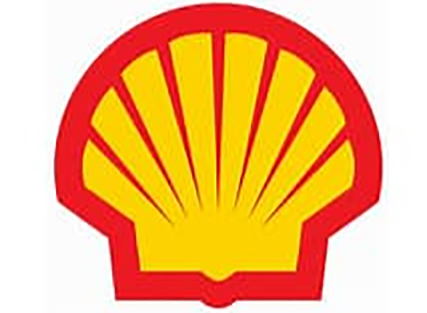About cookies on this site Our websites require some cookies to function properly (required). In addition, other cookies may be used with your consent to analyze site usage, improve the user experience and for advertising. For more information, please review your options. By visiting our website, you agree to our processing of information as described in IBM’sprivacy statement. To provide a smooth navigation, your cookie preferences will be shared across the IBM web domains listed here.
Energy giant Shell eyes net-zero emissions
Shell and IBM launch OREN to help decarbonize mining

“Mining is at the start of the energy transition and it is also an industry that is often forgotten about because it is in areas that you do not often see,” Tarja Strahlman, Head of OREN Solutions, a co-created venture by Shell plc and IBM. “Mining in certain countries around the world is responsible for 40%—50% of the total energy consumed in that country.” Mining and minerals are a cornerstone of enabling the wider energy transition through batteries, wind turbines, solar power and the like.
When consumers think about global energy giant Shell, mining is probably low on the list of associated activities, but with new business ventures and decarbonization initiatives, Shell is on a mission to change that. In fact, Shell wanted to build a solution for the mining industry that could simultaneously tackle sustainability, digital transformation and business growth.
Shell's target is to become a net-zero emissions energy business by 2050. As Shell transitions away from fossil fuels, the company has been experimenting with new business models and seeking partners who specialize in accelerated transformation, innovation and technology scaling. This is why Shell partnered with IBM on a digital business venture for mining, which is a sector that, next to efficiency and safety, requires deep decarbonization.
Shell worked with IBM® Consulting, where Shell employees and IBM consultants tap into the IBM Sustainability Consulting practice and the agile IBM Garage™ Methodology—co-create (design), co-execute (build), co-operate (scale)—to rapidly innovate in a collaborative environment. After much market research and brainstorming the business model, Shell and IBM determined that building a digital platform to enable decarbonization through operational excellence, safety and sustainability in mining was one of the best paths forward.
Zero emisisons
Shell's target is to become a net-zero emissions energy business by 2050
Data Mining at Scale
Discovered insights from across the mining value chain by completing over 350 interviews
In 2020, Shell and IBM launched OREN (link resides outside of ibm.com), a mining optimization platform. “OREN is an open platform for collaboration with different solutions,” says Grischa Sauerberg, Vice President of Sectorals Decarbonisation & Innovation at Shell. “Providers can bring their digital products and offer those to customers. But even more importantly, it also allows them to work together on end-to-end integrated digital solutions that help mining companies tackle the challenges they have around decarbonization.”
Mining companies are a key customer base for Shell, and the energy company’s transition into mining solutions is logical because both sectors are industry-intensive and pivotal to enabling the energy transition. Both sectors are also extractive—heavy equipment extracts raw materials from the earth, processes and transports them. “We chose the mining industry as a starting point because it has a lot of similarity to the energy industry and it has some common challenges,” explains Grischa Sauerberg, Shell’s Vice President Sectoral Decarbonisation & Innovation. Shell has completed numerous digitalization projects for the energy sector, so it can transfer learnings from these projects to mining customers.
To systematically unearth these challenges and form solutions, a diverse team from both Shell and IBM assembled from distant countries, including the UK, the Netherlands, Belgium, Romania, India, Singapore, Australia and Brazil. Mining industry experts, technical experts, project managers, designers, analysts, strategists and developers committed to making OREN the best it could be.
To visualize the end-to-end mining value chain, define customer journeys and map out user pain points, the team conducted extensive user research.
“We have done over 350 interviews across the mining customers’ value chain and we discovered some great insights,” says Sauerberg. “For example, 80% of the mining customers’ pain points are very similar: how to focus on decarbonization through digitalization and data aggregation and how to reduce operation costs.”
After analyzing customer feedback and participating in envisioning and architecture workshops, team members created hypotheses and refined a vision and roadmap for a minimum viable product (MVP) for OREN. The transparent, co-creation approach of the IBM Garage helped the team build an open, collaborative architecture so that numerous solution providers can participate on the platform and it can accommodate an ongoing influx of new players. The open architecture also allows for multicloud and on-premises deployment flexibility.
On the front end, OREN uses Salesforce technology. In the back end, the platform currently runs on IBM Cloud®, but thanks to Red Hat® OpenShift® (link resides outside of ibm.com), it can run on any other cloud platform if the mining customer has other requirements. Data is ingested, managed and analyzed with IBM Cloud Pak® for Data, which is enriched with IBM Open Data for Industries to work with data models from the industry for subsurface, energy and carbon accounting data management. IBM Cloud Pak for Data provides a world-class data fabric implementation because OREN can offer data and supply chain features such as virtualization, governance and lineage, all under one roof. OREN also features the IBM Environmental Intelligence Suite and miners can connect to the IBM Maximo® Application Suite, which provides intelligent asset management, monitoring, predictive maintenance and computer vision.
During the development phase, Shell and IBM followed an agile approach and adopted DevOps principles, which accelerated speed to value. A predictable cadence of agile ceremonies kept the partnership strong and the project focused. In only eight months, the Shell and IBM team took OREN from a theoretical concept to market launch.
As Shell rolled out OREN and deepened its understanding of customers’ needs, the company implemented Intelligent Solutions—integrated mining solutions—to help grow and integrate data and the digital ecosystem.
To help customers solve complex problems that require data from disparate sources, Shell and IBM decided to offer integrated data and digital solutions across the mining supply chain.
To design, build and scale these solutions, the team developed a backlog of problems, solution hypotheses and use cases around two themes: decarbonization and operational excellence. The team initially prioritized two intelligent solutions based on customer feedback:
- Emissions Management, which is capturing, calculating and visualizing emissions information. This formed the first module of the emissions management intelligent solution.
- Water management, specifically as it relates to tailings (mining waste). Tailings storage facility management is visualizing and understanding performance and risks across the end-to-end tailings process and proactively identifying environmental and operational impacts in tailings management, construction and expansion.
Team members have defined MVPs for the emissions management and tailings management intelligent solutions. They are validating the solution hypothesis with Shell and other customers and beginning MVP development.
Emissions management is the critical first step in improving efficiencies around decarbonization opportunities. The emissions management intelligent solution offers the lowest amount of effort in terms of technology and data accessibility. It helps mining companies understand their carbon emissions and stay within the boundaries of government regulations. After all, a company cannot change what it cannot measure.
The solution will help customers collect data from sensors and equipment, check the data’s quality, aggregate it and apply calculations. The carbon calculator will use IBM Environmental Intelligence Suite APIs to complete calculations that adhere to Greenhouse Gas Protocol accounting standards.
The technology also applies analysis and AI so that customers do not simply receive more data, but relevant insights.
The mining company can use this information to automate workflows, optimize operations, switch to renewables and update equipment with high carbon output.
The tailings management tool will digitally oversee storage of mining tailings—the waste leftover after extracting and separating valuable materials from a mine. Typically a wet slurry, tailings often contain toxic chemicals and must therefore be monitored, managed and safely stored. Mining companies commonly store tailings underground or in a dam, and must ensure they do not leak into groundwater or create an environmental issue. Inspectors physically go out to tailings storage facilities to check for cracks or evidence of earth movement, but the digital tailings management tool could aggregate data from satellite imagery, dam sensors and geological reports to effectively monitor tailings facilities and environmental safety. An intelligent workflow could then mitigate any issues immediately and automatically.
OREN Intelligent Solutions can be tailored to focus on the mining customer’s pain point preferences. The team can co-create an intelligent solution to suit requirements, can connect various data and solutions, and can build intelligent workflows using prediction and automation capabilities in the mine. OREN can help a mining company digitize, automate and transform its operations to become more efficient, safer and sustainable.
To achieve this transformation, the team follows a three-step process—visualization, implement/test and scale/expand—enabled by the IBM Garage Methodology.
Shell and IBM continue to iterate OREN based on user feedback, and in January 2022, they went live with version 2.0, including a technology integration platform. The Intelligent Solutions team is currently working through a funnel of use cases that require integrated solutions and have been validated with 40 mining customers.
Shell envisions the OREN platform for the mining sector as a blueprint solution. In time, Shell could replicate this concept to digitally transform other heavy carbon industries—construction, chemicals, cement—and help improve sustainability practices along their journeys to net zero.
“Our vision for OREN is to be the go-to place for mining and many other industry sectors to truly drive digital transformation at scale,” concludes Sauerberg.
Ready to see what IBM Garage can do for your business? Talk to an IBM Garage expert.
Shell (link resides outside of ibm.com) is a group of energy and petrochemical companies that uses advanced technologies and takes an innovative approach to help build a sustainable energy future. The company is headquartered in London, England and has more than 80,000 employees in more than 70 countries.
Legal
© Copyright IBM Corporation 2022. IBM Corporation, IBM Garage, New Orchard Road, Armonk, NY 10504
Produced in the United States of America, October 2022.
IBM, the IBM logo, ibm.com, IBM Cloud, IBM Cloud Pak, IBM Garage, and IBM Maximo are trademarks of International Business Machines Corp., registered in many jurisdictions worldwide. Other product and service names might be trademarks of IBM or other companies. A current list of IBM trademarks is available on the web at www.ibm.com/legal/copytrade.
Red Hat and OpenShift are trademarks or registered trademarks of Red Hat, Inc. or its subsidiaries in the United States and other countries.
This document is current as of the initial date of publication and may be changed by IBM at any time. Not all offerings are available in every country in which IBM operates.
The performance data and client examples cited are presented for illustrative purposes only. Actual performance results may vary depending on specific configurations and operating conditions. THE INFORMATION IN THIS DOCUMENT IS PROVIDED “AS IS” WITHOUT ANY WARRANTY, EXPRESS OR IMPLIED, INCLUDING WITHOUT ANY WARRANTIES OF MERCHANTABILITY, FITNESS FOR A PARTICULAR PURPOSE AND ANY WARRANTY OR CONDITION OF NON-INFRINGEMENT. IBM products are warranted according to the terms and conditions of the agreements under which they are provided.
The client is responsible for ensuring compliance with laws and regulations applicable to it. IBM does not provide legal advice or represent or warrant that its services or products will ensure that the client is in compliance with any law or regulation.
